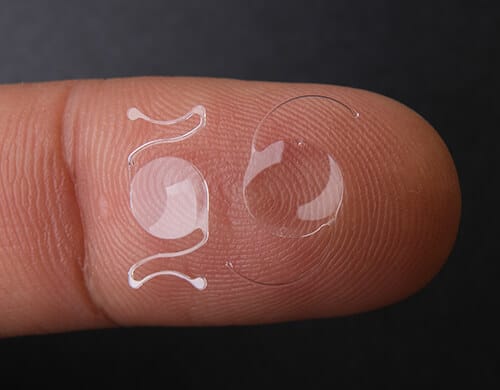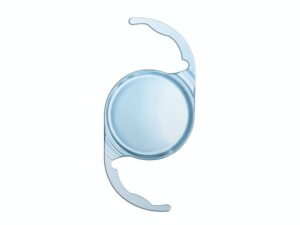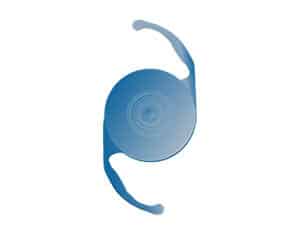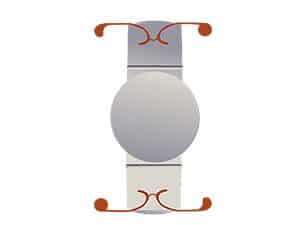Cataract Lens Options
Premium Cataract Lens in San Diego

As a cataract patient, you have choices in the type of lens that replaces your natural, cloudy lens. You can opt for a standard single-focus lens, which restores vision at a single fixed point, usually distance. Or, you can upgrade to a premium lens that restores vision at multiple distances. Certain types of premium lenses can also correct co-existing vision conditions like astigmatism.
Because premium lenses correct vision at all distances, you are less likely to rely on glasses or contacts than you are with monofocal lenses. This gives you an incredible amount of freedom and independence to enjoy your favorite activities without the burden of corrective eyewear. Although you may need corrective eyewear for certain activities or in special lighting conditions, you can complete most of your daily routine without them.
The only way to treat cataracts is to remove your eye’s natural, cloudy lens and replace it with an artificial lens implant, also known as an intraocular lens or IOL. If you are facing cataract surgery, you will need to select the IOL that best suits your vision needs, goals and lifestyle. Luckily, you have more options than ever from which to choose.
Monofocal IOLs
Monofocal IOLs restore your vision at a single distance — either near, intermediate or far.
Many people with monofocal IOLs opt to have them set for distance vision, and then wear reading glasses for near and intermediate tasks. This may be a good option for you.

Advantages
- Have been safely used by cataract surgeons for a very long time
- Covered by Medicare and other insurance companies
- Can be used to create a monovision effect
Disadvantages
- Provides focus at only one distance
- Requires corrective eyewear to see clearly at all other distances
- Does not correct presbyopia or astigmatism
Multifocal IOLs
Multifocal IOLs restore vision at near, far and intermediate distances.
Different areas of the lens are designed for each distance, and the brain and eye learn how to rely on each part as needed.

Advantages
- Improve vision at near, far and intermediate distances
- Little or no need to wear corrective eyewear
Disadvantages
- Some patients report issues with contrast, glare and halos around lights
- Insurance companies do not cover the cost of the lenses
- Patients with prior refractive surgery such as LASIK, PRK or RK, or patients with retinal problems are not candidates for this type of lens
Accommodating IOLs
Accommodating IOLs work with the muscles of your eye to mimic the movements of the natural lens.
They flex forward when focusing on near objects, and rest when focusing on distant objects.
Crystalens/Trulign
Crystalens is a flexible “accommodating” lens that relies on the natural movement of the eye’s muscles to shift forward and backward and change focus. The Crystalens can provide clear vision at near, intermediate and far distances.

Advantages
- Improves vision at near, far and intermediate distances
- Little or no need to wear corrective eyewear
- Patients with prior refractive surgery and retinal issues ARE candidates
- Corrects astigmatism
Disadvantages
- Insurance companies do not cover the cost of the lenses
Toric IOLs
Toric IOLs are designed to correct cataracts and astigmatism (an irregularly shaped cornea) simultaneously. They are the only lens that can help reduce dependence on glasses or contacts if you have astigmatism.
Toric lenses allow us to treat cataracts while simultaneously correcting blurry or distorted vision caused by astigmatism. With higher quality vision, you will be less dependent on glasses after your cataract surgery.

What to Consider When Selecting Your Lens
The first factor to consider when evaluating your lens options is the importance of near and distance vision to your lifestyle. Are you an active person that enjoys playing golf or other sports? Or do you prefer to spend your time watching your favorite television programs, reading or sewing? Do you drive a lot? This type of information can help narrow down your IOL options.
Cost is another important consideration. Medicare and other insurance companies usually cover the cost of monofocal lenses.
If you select multifocal or premium lenses, you will probably need to pay out of pocket above and beyond what your insurance company will cover.
Finally, if you are interested in premium lenses, make sure you work with a qualified cataract surgeon. Since premium lenses are newer than monofocal lenses, some surgeons are not as familiar with their features, or they do not have a lot of experience placing them. Ask your cataract surgeon how many premium IOLs they have placed, and about the typical outcomes.
Discuss Your IOL Options with Our Cataract Surgeons
To discuss your IOL options with our experienced cataract surgeons, please schedule an appointment by contacting our San Diego office today.







